Here is the Volume 8 of Curling from When you watch something, visit us first! Ms. Mika MATSUZAWA, who represented Japan in Curling at the 19th Olympic Winter Games in Salt Lake City, USA, 2002, told us about the ice condition in Curling this time. This is the combined version of Part 8-1 and 8-2 on our YouTube channel.
In Vol.7, we learned about the meaning of the location of stones of Curling.
This time, Ms. Mika MATSUZAWA, who represented Japan in Curling at the 19th Olympic Winter Games held in Salt Lake City, USA, in 2002, told us about the importance of Ice condition in Curling.
I think you will understand how Curlers (Curling players) think about competing.
Part 8-1: Ice condition (First part)
About Ice Condition
.png)
Now, I am talking about the Ice condition. Ice condition is, first, how much the stone is sliding on the Ice, and second, how much the stone curls. These 2 things are about Ice condition. For example, a player puts a brush here. This is where they target when they throw a stone.
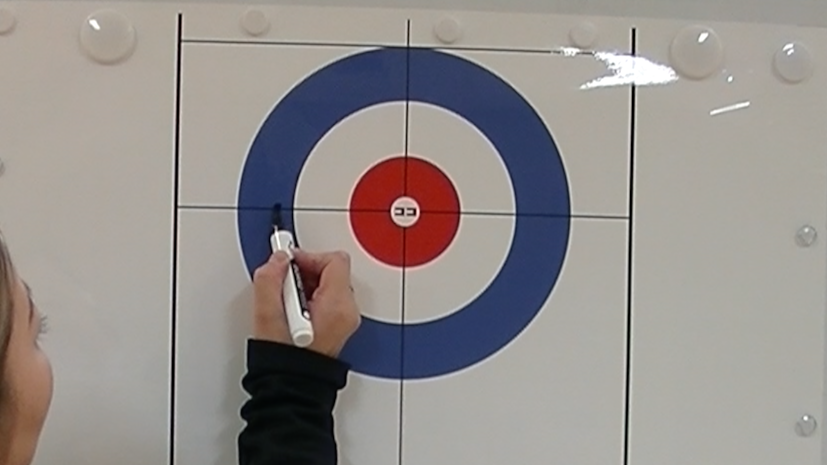
When they throw a stone toward this target, for example, one guideline is that if they throw a stone toward this brush on today’s Ice, it will curl and go into the center of House.
If it is a different venue or the competition changes, the stone may not curl as much, or it may curl more, when thrown toward the same spot.
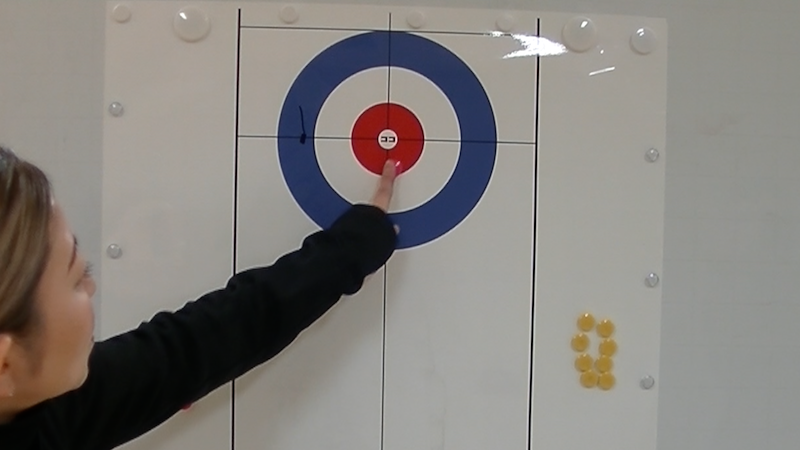
In fact, how the stones curl depends on the Ice, competition, and venue. For example, on the same sheet, stones may curl this much on this line, but not the same width on the other line, or curling of stones may be different on going or on return. The stones will curl when going from Home side (*The side from which players throw the stone in the 1st End.) to Score side (*The opposite side of Home side and Score board is often set on this side.) but it may curl less when from Score side to Home side.
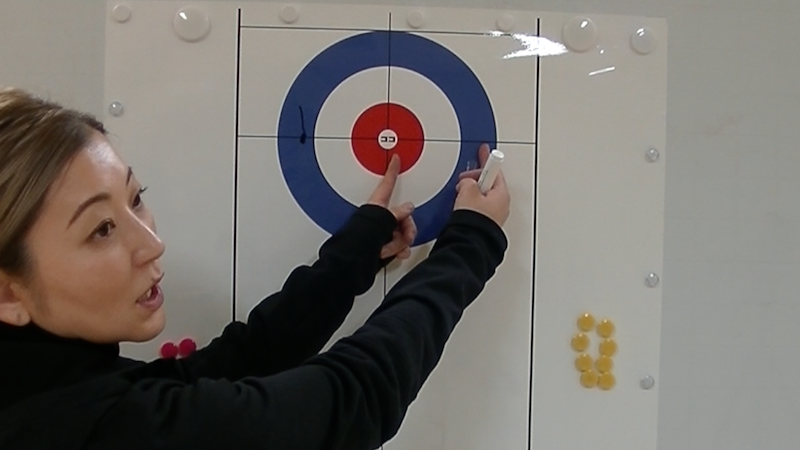
For example, if there is spectators seating on this side, the stones may “fall” toward it, so the stones may not curl as much in the half of the sheet close to the spectator seating.
One is how much the stone curls, and the other is the speed. The speed of the stone. If a stone is thrown at a speed that takes roughly 14 to 15 seconds to pass from Hog line to Hog line, the stone basically goes into House.
*Hog line: A line drawn 21 feet (approx. 6.4 m) before Tee line. The distance between both Hog lines is 72 feet (approx. 21.95 m).
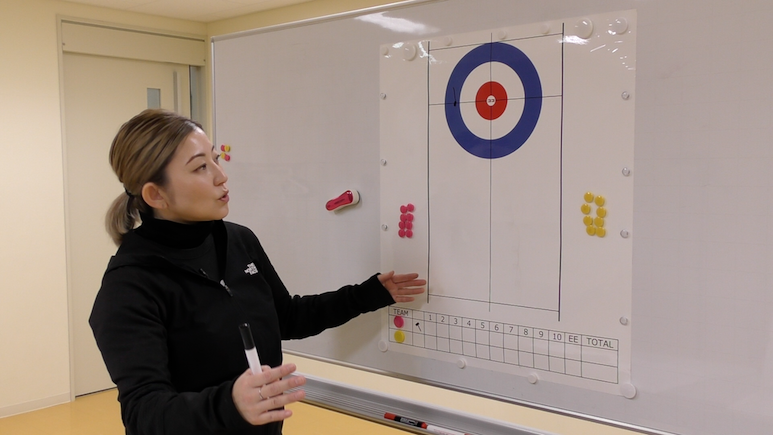
As I mentioned earlier, the speed of stones entering House actually varies from Ice to Ice, and how much stones slide on today’s Ice varies from time to time at the same venue, and also changes rapidly during the game, so it is important to determine how much this line on this sheet is sliding at the moment.
For example, a player threw a stone here on the 1st throw of the 1st End. Actually, there is pebbles, which is a protrusions on the surface of Ice, and it acts as a resistance on the 1st throw, so the stone does not slide so much.
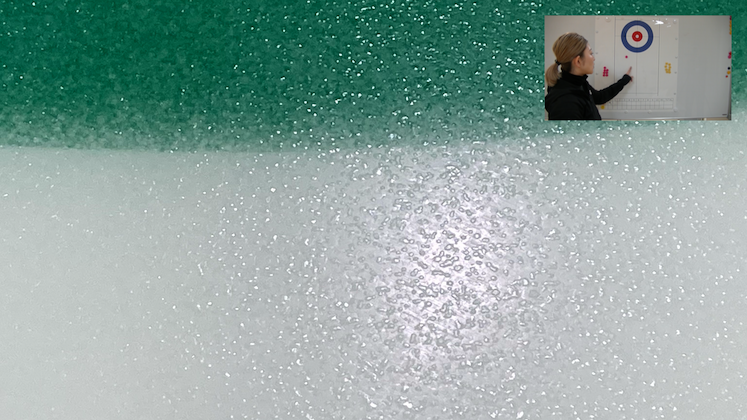
Then, if they throw the 2nd stone on the same line, as it is the same line, so the stone slides a little more even if it is thrown in the same way. Then, after about the 3rd throw, the pebbles are crushed in a good way, and if the stone goes into House, they can confirm that the ice speed is stable and a stone is already sliding on this line in a good way.
Then, about other lines that are not in use, the situation is the same and until that lines are used about 3 times, stones may not slide in a good way. So the players actually count how many times they have thrown stones on which line during the game. How much the stone is or is not sliding on that used and unused line is information that players absolutely need to know.
How many times they have thrown stones on that line, or in which End they are in now. As the game progresses, the Sweeping melts the pebbles on the surface of the Ice and makes the surface flatter, so that the stone will no longer slide on the Ice.
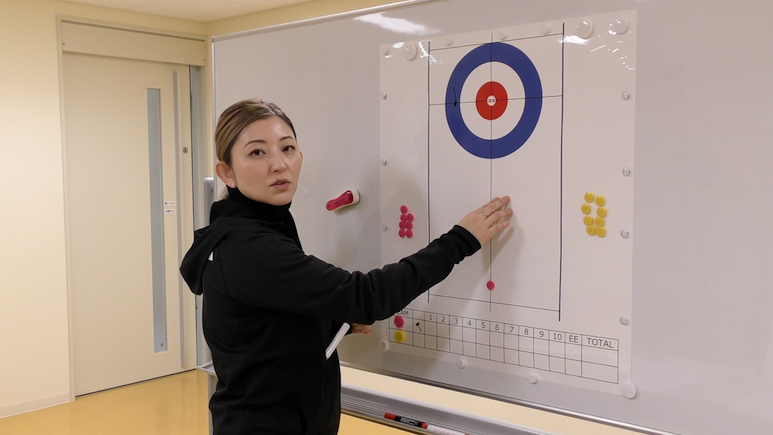
So, stones do not slide well at the beginning of the game, and they come to slide well later, but finally stones do not slide further later depending on the area in the sheet. In the area around the center line, where Sweeping is often done, the stones will stop sliding in the latter of the game, so it is necessary to check the Ice conditions within the team.
Part 8-2: Ice condition (Latter part)
Frost
In addition to Sweeping, another factor that can prevent stones from sliding on Ice is the frost on the Ice. What makes frost is humidity. When the humidity rises or the temperature in the arena drops suddenly, the surface of the Ice turns white and becomes frosty. Then the resistance of the Ice increases, so the stones will not slide.
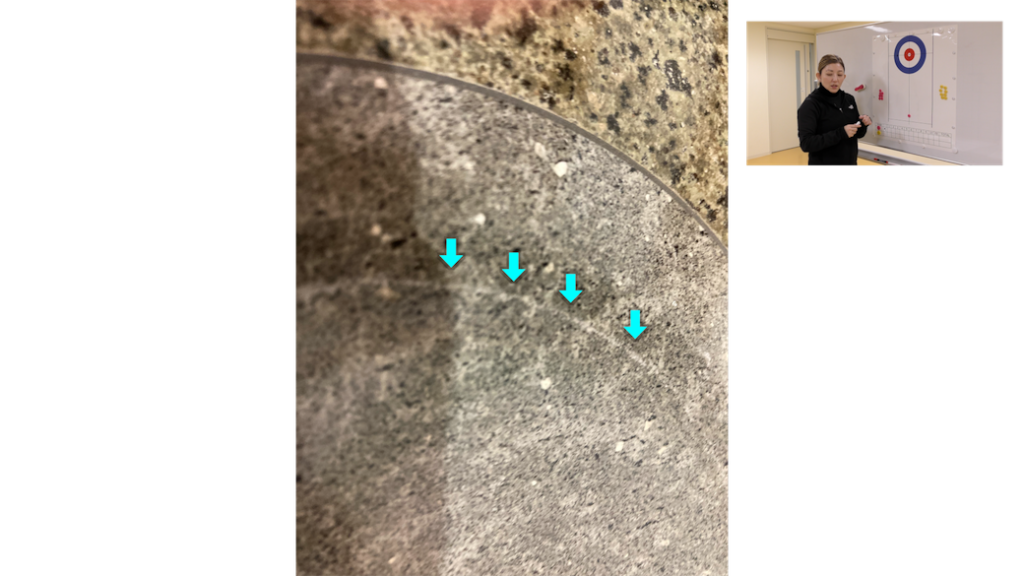
Talking about when such change occurs, for example, when the temperature in the arena rises due to the large number of spectators, and when the venue is cooled by air conditioning, frost forms on the Ice. Also, when players get off the Ice at Halftime, there will be frost on the Ice in that case.
And, for example, if the number of spectators in the arena decreases at once, the temperature may suddenly drop and frost may form on the Ice. Or, for example, when a game goes into an extra End, and games on the other sheets have finished, therefore, there is no one in the arena, even the players are gone and the arena temperature drops, sheet of that game will have frost on the Ice.
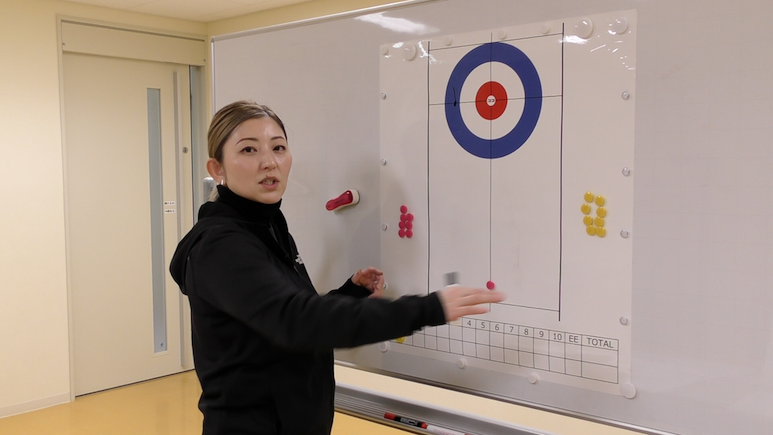
In this way, players actually have to “battle the ice” as well. It is necessary to assess the Ice conditions in order to make a good shot, so it is very important to read the Ice conditions, to read the Ice.
Ice condition in abroad
I suppose you watch, for example, Japan Curling Championship games on TV, but the games in abroad. Ice made in an Ice arena, or the games in Canada, for example, stones on the Ice made in places other than Japan actually very curl.
Ice in Japan does not have such a large curling of stones in this House, but on the Ice in abroad or Canada, the curling of stones after entering House is very large. If players do not compete on Ice where the stones curl well, they cannot come to know how to plan their game and, of course, how to throw their shots on such Ice.
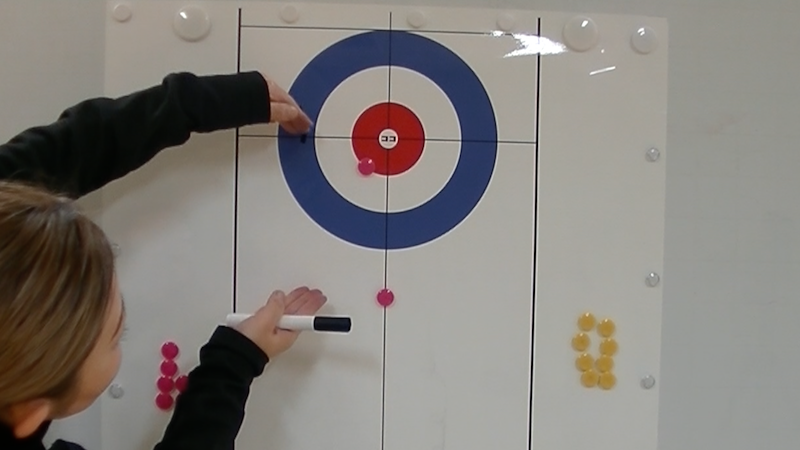
It is also very important to practice and compete on the Ice where stones curl well, so it is very good for them to play many games on the Ice in abroad where stones curl well. As the stones become more curling because of such Ice, the attack and defense in House comes to be quite interesting.
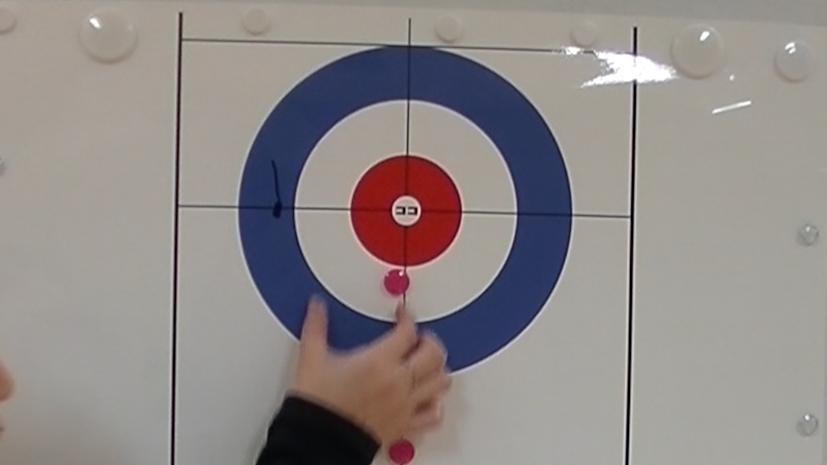
In the case of Ice in Japan, it is difficult to hit the center of this stone in House, but in the case of Ice in abroad or Ice at World Competitions, even if the thrown stone has speed, it will curl on the Ice, so the stone in House can be moved like this.
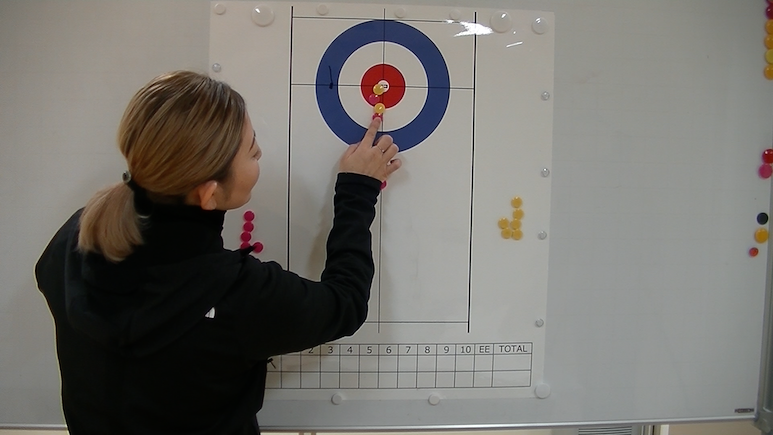
n recent years, there has been many Ice in Japan where stones slide well and curl well, but at the venue of World Championships and other World Competitions, stones curl more and the Ice condition changes a lot, so in this sense, experiencing Ice in abroad is the key point to winning international competitions.
Share this content:
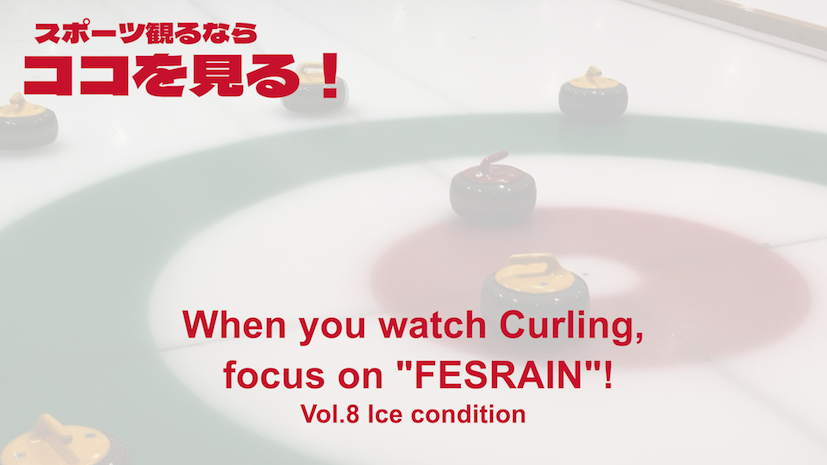
コメントを残す